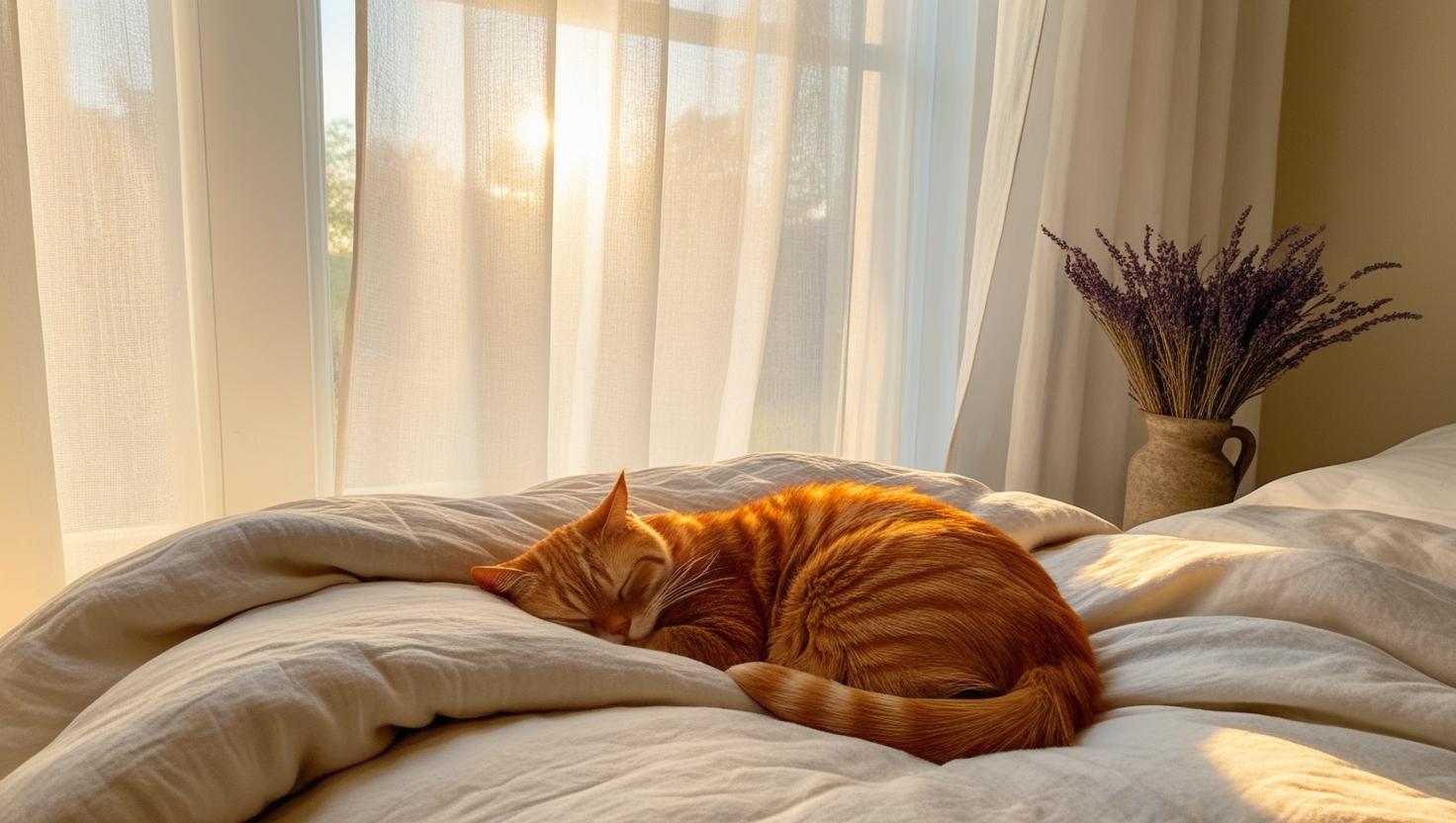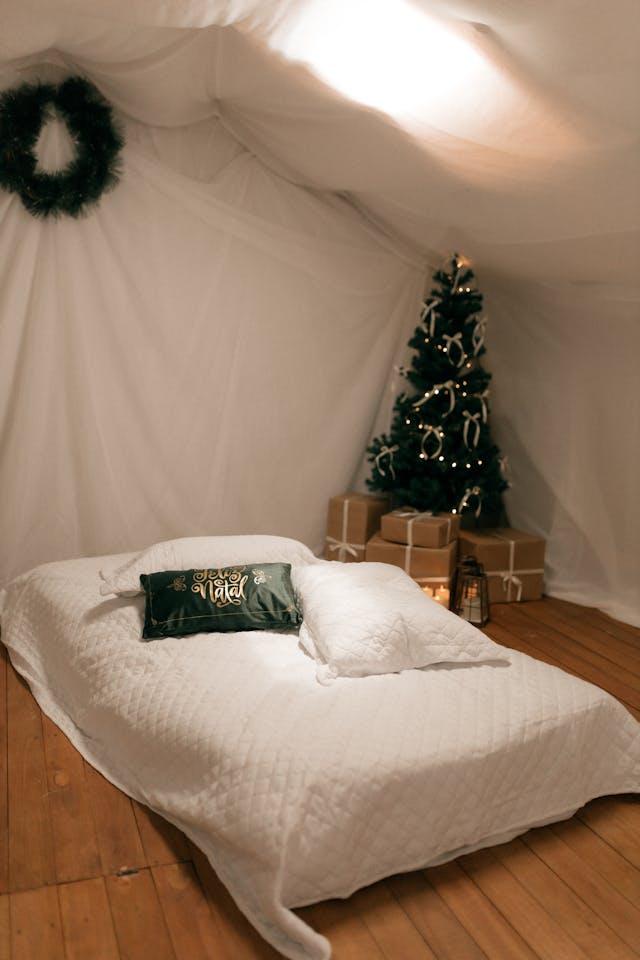Can Bedding Go in the Dryer?
Can bedding go in the dryer? Yes—with the right settings and a few fabric-specific tips. In this guide, you’ll learn exactly how to dry cotton, bamboo, linen, silk, and bulky items like duvets so everything stays cozy, fresh, and long-lasting.
Key Takeaways: Can Bedding Go in the Dryer
- Yes—most bedding can go in the dryer if you follow the care label and stick to low or delicate heat.
- Over-drying causes stiffness and wear; remove items slightly damp and finish on the bed or clothesline.
- Wool dryer balls reduce clumping and speed up drying for bulky pieces like comforters.
- Natural fibers (bamboo, linen, silk) need cooler settings or air-drying to prevent shrinkage.
- Eco-friendly air-drying lowers energy use and extends fabric life; a hybrid approach (air-dry + 10-minute low tumble) works well.
Why Proper Drying Matters for Sleep and Comfort
Drying isn’t just the last step—it determines how soft, breathable, and durable your bedding feels night after night. Repeated high heat can roughen fibers, flatten loft, and fade colors. Industry guidance consistently points to tumble dry low for most sheets and careful, low-heat drying for down-filled items, which aligns with this article’s advice (Sleep Foundation and Parachute Home Care).

Can Bedding Go in the Dryer? Yes—With Care
Read the Label First
Start with the tag. It tells you if an item should be tumble-dried low, line-dried, or dry-cleaned only. Most cotton and microfiber sets are dryer-friendly on low. Bamboo, linen, and silk ask for cooler settings or air-drying to protect drape and sheen. If you love sustainable bedding, treat those natural fibers gently so they last.
For fabric basics and eco-material pros/cons, explore our in-depth overviews:
Types of Sustainable Bedding Materials and
From Cotton to Silk: A Guide to Bedding Material Choices.
Use Low or Delicate Heat (Most of the Time)
Low heat is your friend. It preserves softness, reduces shrinkage, and helps colors last. Add wool dryer balls to improve airflow and shorten cycles. Remove bedding slightly damp, then air-finish on the line or the bed for fewer wrinkles. Authoritative care pages echo “tumble dry low” and recommend dryer balls for better results (Sleep Foundation; Parachute Care).

Fabric-Specific Drying Tips
Cotton Bedding
Most cotton sheets and pillowcases dry well on low to medium-low heat. Stop the cycle while slightly damp to prevent stiffness. Shake out pieces between cycles to cut wrinkles. If you prefer line-drying, a brief 10-minute tumble at the end restores softness to eco-conscious sheets without overheating fibers. For fundamentals by fabric, see
From Cotton to Silk.
Bamboo and Linen Bedding
Keep it cool. Bamboo and linen are breathable, sustainable bedding favorites, but they can shrink with heat. Choose air-dry or delicate/low tumble and remove promptly. If wrinkles worry you, smooth by hand on the bed or finish with a very short low-heat tumble. Fabric-conscious drying helps your organic bedding last longer; for eco basics, visit
our sustainable materials guide.
Silk Bedding
Skip the dryer for silk. Air-dry flat or hang in shade to preserve luster. If you must machine-wash, use a mesh bag and a silk-safe detergent, then press moisture out with a towel. This gentle approach keeps the drape and sheen you bought silk for.

Drying Large Comforters and Duvets
Give Them Space (and Time)
Use a large-capacity dryer on low heat with wool dryer balls. Dry comforters solo so they tumble freely, pause every 30–40 minutes to break up clumps, and finish when loft is evenly dry. Leading guides recommend low heat plus dryer balls to maintain loft and prevent mildew (Sleep Foundation; Better Homes & Gardens).
Shopping or comparing insulation? Read Comforter Guide: Choose the Perfect Comforter for Every Season and
Duvets vs. Comforters.

Freshening Between Washes
Quick, Heat-Safe Refresh
Use the air-fluff (no heat) setting for 10–15 minutes. Add two dryer balls and a damp washcloth for a quick lift without stressing fibers. If you’re sensitive to fragrances or allergens, keep it unscented and consult our tips in
Bedding and Allergies: Key Facts You Need to Know.
Eco-Friendly vs. Conventional Drying
Choose Lower Heat and Hybrid Methods
Air-drying is the gentlest, lowest-energy option. It reduces wear and helps sustainable bedding last. When time is tight, a hybrid method works: air-dry halfway, then tumble on low for 5–10 minutes to soften and de-wrinkle. Authoritative sources endorse low heat for sheets and careful, complete drying for lofty items (Sleep Foundation; Better Homes & Gardens).
Will My Bedding Shrink?
Heat + Time = Shrinkage Risk
Shrinkage happens when fibers meet high heat for too long. Cotton, bamboo, and linen are most at risk. Protect your investment by staying on low, removing items while slightly damp, and smoothing them flat. If accidents and spills mean frequent laundering, our cleanup resources help protect your sleep setup:
- Clean Pee Mattress (No Baking Soda)
- How to Clean Cat Pee from a Mattress
- How to Clean a Soiled Mattress
- Pee Mattress Cleaning Guide
- Clean Urine with Apple Cider Vinegar
Certification Mini-Guide for Fabrics You’ll Dry
Know What Your Labels Mean
Certifications help you trust what touches your skin. GOTS focuses on organic fiber integrity and responsible processing; OEKO-TEX® STANDARD 100 screens for harmful substances. While certifications don’t dictate dryer rules, they usually recommend gentle care—exactly what keeps eco-conscious sheets softer for longer. Pair low heat with mild detergent, and follow brand guidance like
Parachute’s care page and
their sheet-washing guide.
Comforter Drying Playbook
Step-by-Step for Lofty Layers
Prep, pause, and proof. Use a front-load, large-capacity dryer. Tumble low with wool dryer balls. Pause to fluff every 30–40 minutes. Finish only when clusters are dry all the way through. This prevents mildew and preserves loft (Sleep Foundation; BHG).
Buyer’s Notes: When to Replace vs. Revive
Look for Feel, Not Just Looks
Crunchy sheets and flattened comforters are signs of heat-wear. If low-heat washes and air-finishing don’t restore softness, it may be time for a refresh. When upgrading, choose durable weaves (percale, sateen, linen) and follow low-heat care from day one to keep that new-sheet feel. For material comparisons and seasonal picks, browse our
Comforter Guide and
Duvets vs. Comforters.
FAQ
- Can you put all bedding in the dryer?
- No. While most cotton and microfiber can handle low heat, bamboo and linen prefer delicate or air-dry, and silk should be air-dried.
- What dryer setting is best for bedding?
- Choose “low heat” or “delicate” for most items. Over-drying on high heat weakens fibers and causes stiffness.
- How do you dry comforters without clumping?
- Dry one at a time on low with wool dryer balls. Pause to shake and redistribute fill until everything is fully dry.
- Can drying bedding too long damage it?
- Yes. Long, hot cycles break fibers and make fabric feel rough. Stop when slightly damp and let it finish on the bed or line.
- How can I make my bedding smell fresh without washing?
- Use the air-fluff setting with a damp cloth for 10–15 minutes. Skip fragrance if you’re sensitive to allergens.
Final Thoughts: Can Bedding Go in the Dryer?
So, can bedding go in the dryer? Absolutely—use low heat, follow the label, and finish with a quick air-fluff when needed. This care routine helps organic bedding and eco-conscious sheets stay soft, breathable, and durable. For more fabric-specific help and seasonal bedding picks, explore Cozy Bed Quarters guides throughout this article.























